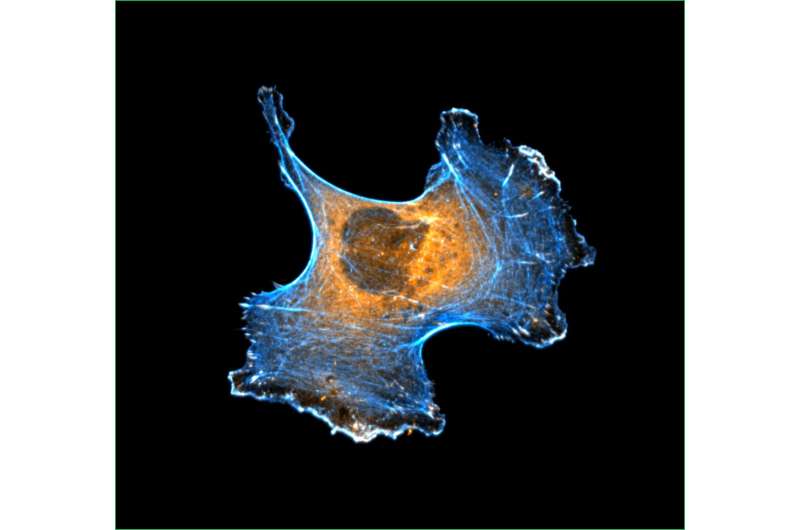Cancer cells behave like Goldilocks: Resolving the mystery of cancer cell steering

An international research group has investigated the mechanisms of cell migration and the impact of tissue rigidity on cell positioning and steering. The research sheds light on, for example, cancer cell migration, and opens new possibilities for stopping and directing it.
Have you ever considered why different parts of your body feel hard or soft and what this might mean in terms of your health? Cell biologists from the University of Turku, Finland, together with an international multidisciplinary team of scientist have uncovered for the first time how tissue stiffness determines cell positioning and regulates all types of cell migration, ranging from the neuronal growth cone turning to dissemination of malignant cancer cells in brain tumors and breast cancer.
Our bodies are built from billions of cells and each cell has it specific task and carefully determined position within a tissue. Cell positioning is regulated by many factors, including tissue rigidity. Cells are capable of probing and sensing their environment, and different cell types have different preferences for optimal conditions. A little bit like Goldilocks in the story trying out the different beds of the bear family and finding one bed to be too soft, the other one two hard and one to be just right. While this has been well-known for a long time, it has remained a mystery to researchers how cells are able to steer themselves to the optimal environment.
"The prevailing view among scientists was that all cell types prefer high-rigidity environments and migrate towards increasing stiffness. This process has been coined the term 'durotaxis'—migration towards hard from Greek and Latin," says Doctoral Researcher Aleksi Isomursu.
"I was visiting the University of Minnesota for a research project and noticed that brain cancer cells grown on engineered substrates with alternating stiffness show the opposite behavior they turned towards soft," Isomursu continues.
This observation launched an interdisciplinary research project involving cancer cell biology, computational modeling and engineering and involving researchers from three continents. As the outcome, the researchers uncovered the basic mechanism all cell types use to steer themselves towards their optimal environment.
These results, published in Nature Materials, are likely to have medical relevance in the future in stopping and directing cancer cell migration.
"I experimented with different types of drugs and identified ones that could make brain cancer cells stop moving or change direction," explains Postdoctoral Researcher Mathilde Mathieu.
Identification of the mechanism of cell steering provides explanations for many thus far mysterious steps in cancer dissemination, for example how cancer cells migrate out from the stiff core of a breast tumor.
"These findings have been gaining a lot of interest in researchers and we have even played around with the idea of launching a new term—'mollitaxis,' migration towards soft," says the Principal Investigator of the laboratory at the University of Turku, Professor Johanna Ivaska.
More information: Aleksi Isomursu et al, Directed cell migration towards softer environments, Nature Materials (2022). DOI: 10.1038/s41563-022-01294-2
Journal information: Nature Materials
Provided by University of Turku





















